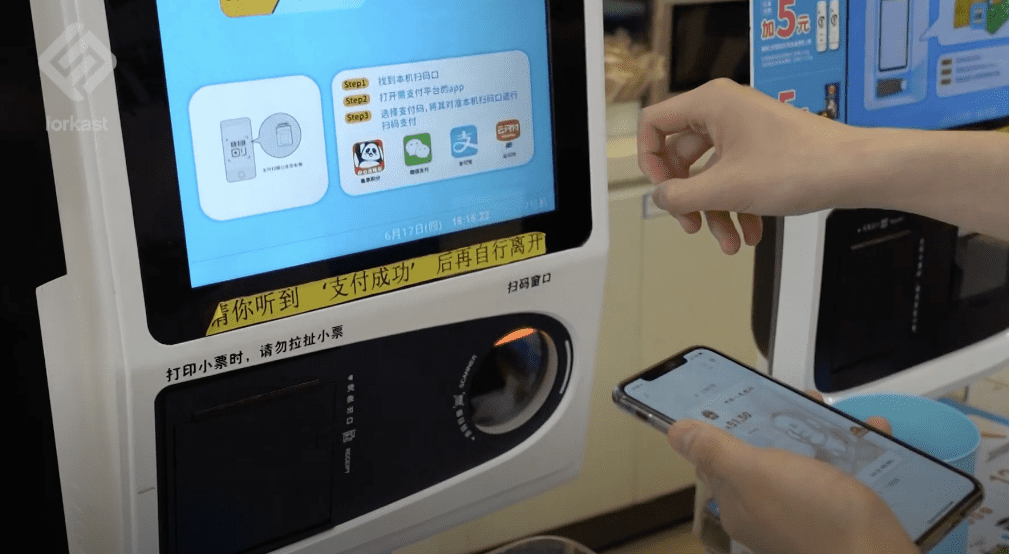As China ramps up digital yuan testing, observers have said the government’s push on e-CNY adoption is increasingly looking like a soft launch.
The country’s latest efforts, for example, include the use of e-CNY payment for a tollway in the northwestern province of Shaanxi, known as an essential spot for China’s Belt and Road initiative.
Xi’an, the capital city of Shaanxi province, has been one of the joint points of the economic routes connecting the world’s second-largest economy with Europe, Africa and the rest of Asia.
Given the city’s strategic geographical importance, Xi’an was among the second batch of pilot cities for e-CNY trials. By June 2021, more than 1.1 million private e-CNY wallets had been set up in the city, according to a report from local media Economic Information Daily.
“The e-CNY testing is now at a regular pilot stage, and of course you can consider it a long-term, planned soft launch with some user limitations,” Zhaosheng Jiang, director of the Blockchain Research Center at 01 Finance, a Beijing-based fintech think tank, told Forkast.News.
Matteo Giovannini, a senior finance manager at Industrial and Commercial Bank of China, one of the country’s biggest commercial banks, shared a similar view. He told Forkast.News that the digital yuan development has passed the stage of pure testing after several rounds of trials in major cities, with the involvement of a growing number of commercial activities using e-CNY.
“I also think that for China, the possibility of relying on a high penetration of smartphones, a digital-savvy population and favorable government policies represents all factors that have played a major role in drastically reducing the testing time and quickly moving to a rollout stage,” Giovannini said.
Reinforcing banks’ role
The fact that Chinese residents are already familiar with mobile payment could benefit the roll-out of the e-CNY. China leads globally in digital and mobile wallet use, accounting for 72% of the country’s e-commerce payments in 2020, while the share in the U.S. was 30% and Europe’s was 26%, according to a recent Moody’s report citing data from WorldPay.
Analysts of Moody’s wrote in the research report, released last week, that the widespread adoption of digital yuan would “help strengthen banks’ role in the e-payment system by increasing their data collection and user bases.”
Giovannini said that incumbent financial institutions can thus rely on established infrastructure, on a physical presence near customers and on the reputational factor built over decades of operations.
Also, e-CNY is expected to have a significant influence on the financial system. Giovannini said that the central bank could carry out more targeted monetary policies through real-time monitoring, and that commercial banks could see a higher level of transparency, lower operating costs, a boost in combating illegal activities such as frauds, as well as a greater sense of security for people safeguarding their money.
Impact on tech giants
Moody’s analysts suggested the effects on tech companies would be limited in the short term, but competitive risks may increase over the long run.
Digital yuan is designed to operate in parallel with e-payment services, such as those provided by Tencent’s WeChat Pay and Alibaba affiliate Alipay. “The introduction of e-CNY also reflects authorities’ concerns about data concentration among technology companies and the financial activities of non-bank payment institutions,” the report said.
Jiang said that existing e-payment services providers could choose to integrate e-CNY into their systems and offer users more diverse payment options.
The steady erosion of market power of the WeChat Pay-Alipay duopoly is going to “result in an increased level of competition where tech companies are set to represent an alternative service compared to a mainstream central bank digital currency (CBDC) payment system centrally controlled by the People’s Bank of China,” Giovannini said.
Internationalizing the yuan
The PBOC, China’s central bank, said in a white paper published last month that cross-border payments involved various complicated issues, such as monetary sovereignty, foreign exchange policies and arrangements, as well as regulatory and compliance requirements.
“Though technically ready for cross-border use, e-CNY is still designed mainly for domestic retail payments at present,” the PBOC said in the white paper, adding that the internationalization of a currency was a natural result of market selection.
Moody’s report also pointed out that China’s CBDC is unlikely to challenge the role of the U.S. dollar in the international payments system or foster the internationalization of the yuan in the near term. “But the PBOC will continue to explore the possibilities for international adoption of the currency,” the report said.
Jiang said that e-CNY was initially designed for retail payment scenarios in the country rather than challenging the international status of the U.S. dollar. “The progress of the Chinese yuan internationalization is not determined by the digitalization of the yuan,” he said.
“The cross-border utilization of e-CNY won’t happen until a fully implemented rollout has been achieved within China’s borders,” Giovannini said, adding that there have been planned tests of cross-border transactions among the PBOC and the governments of Thailand, Hong Kong and the UAE. “But these are still very early-stage projects and are basically bilateral tests.”





